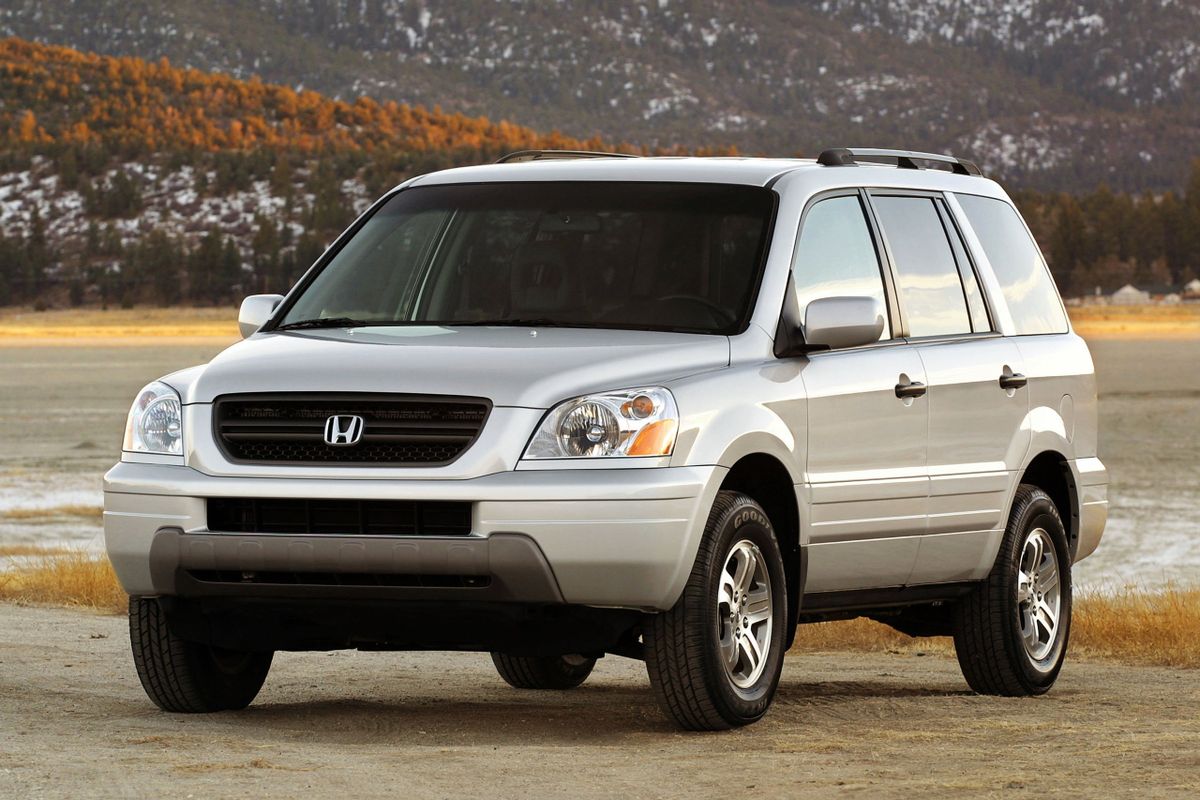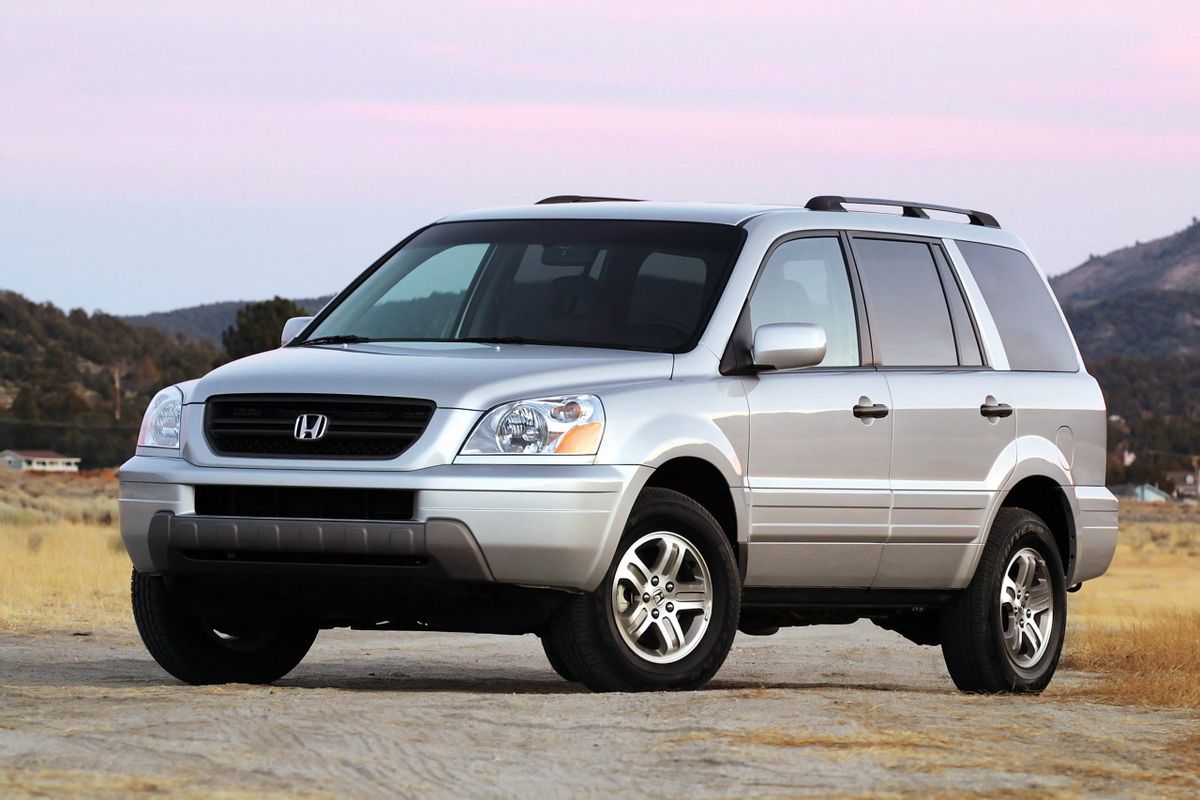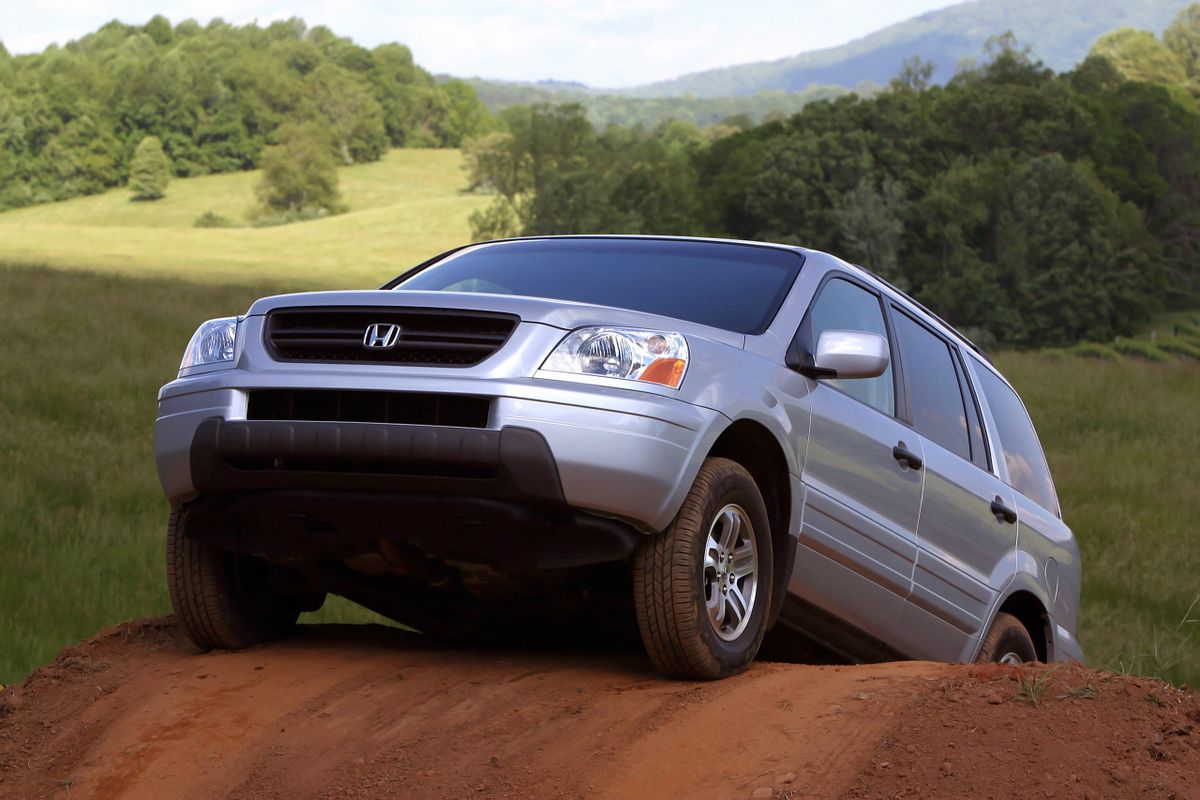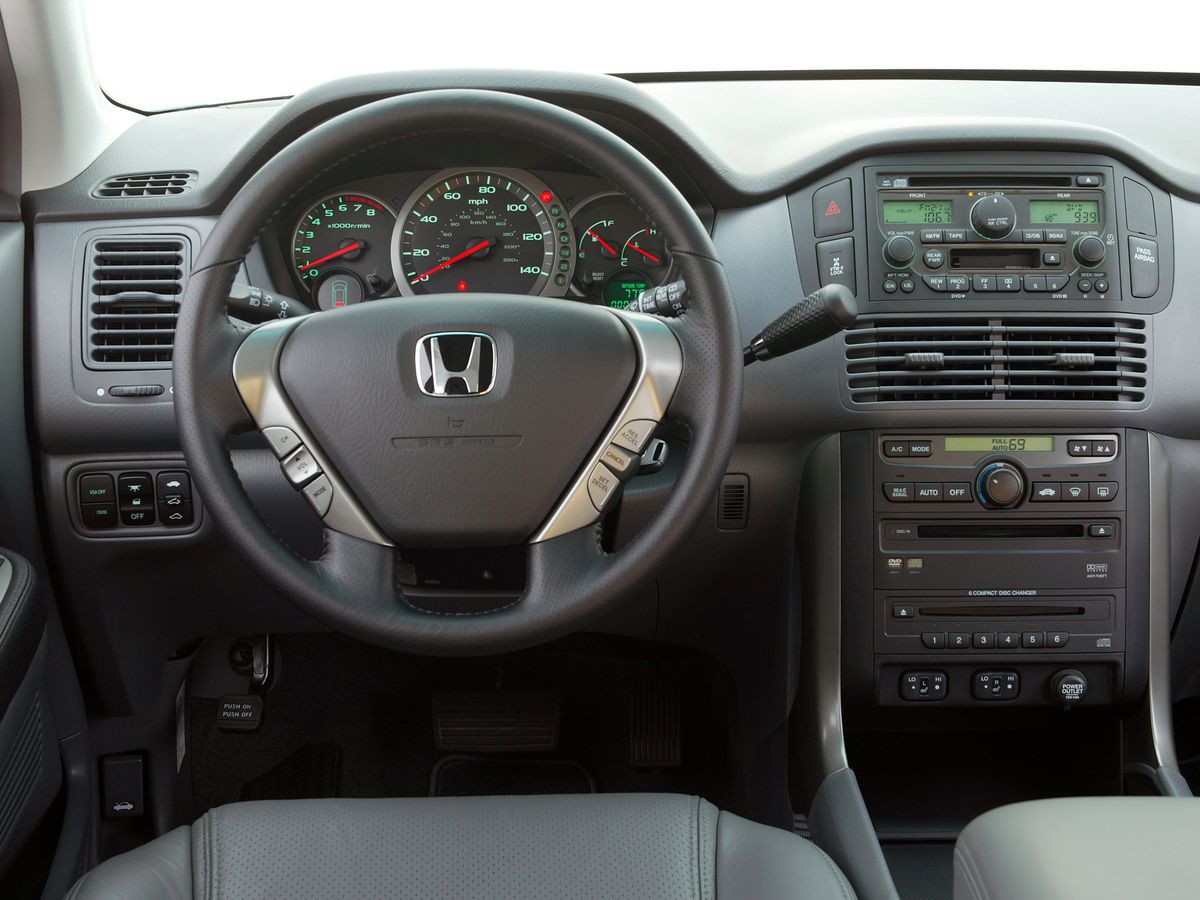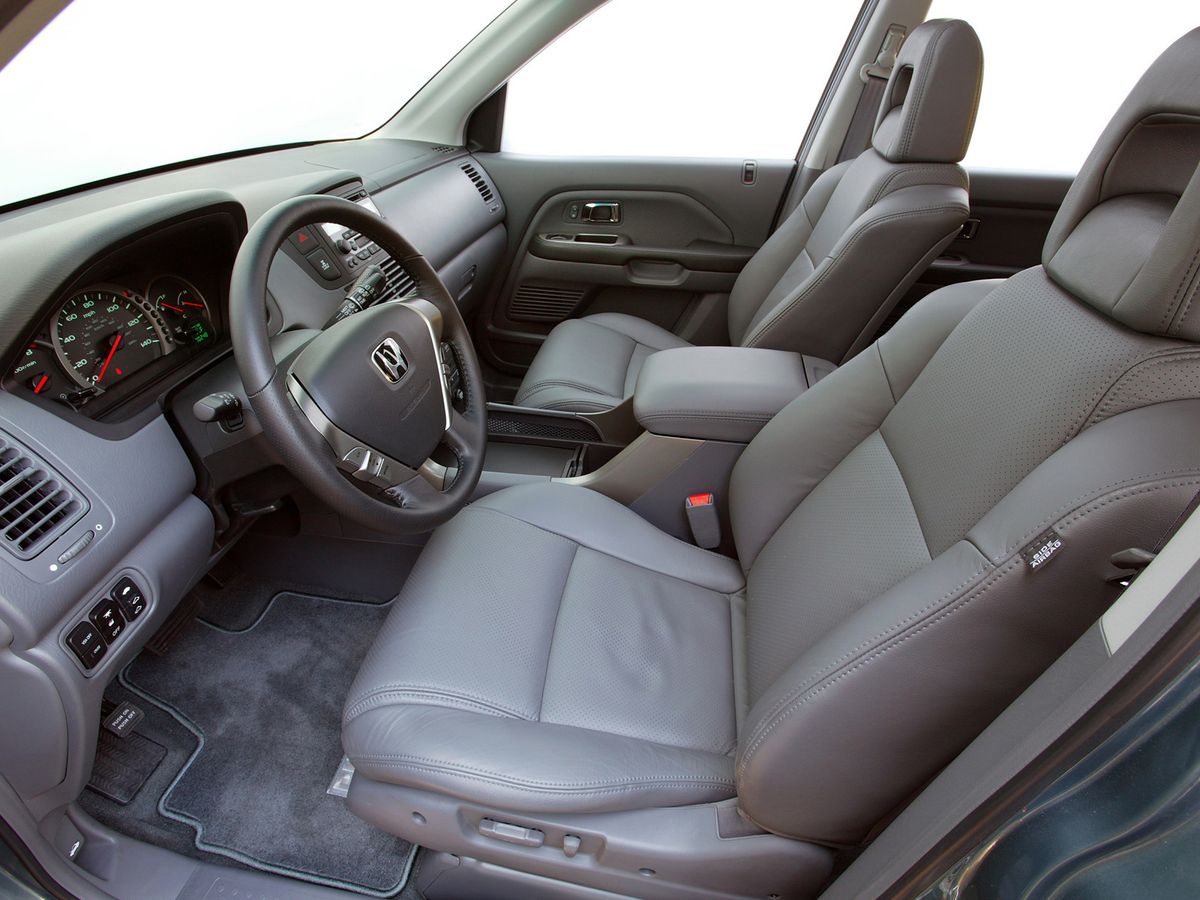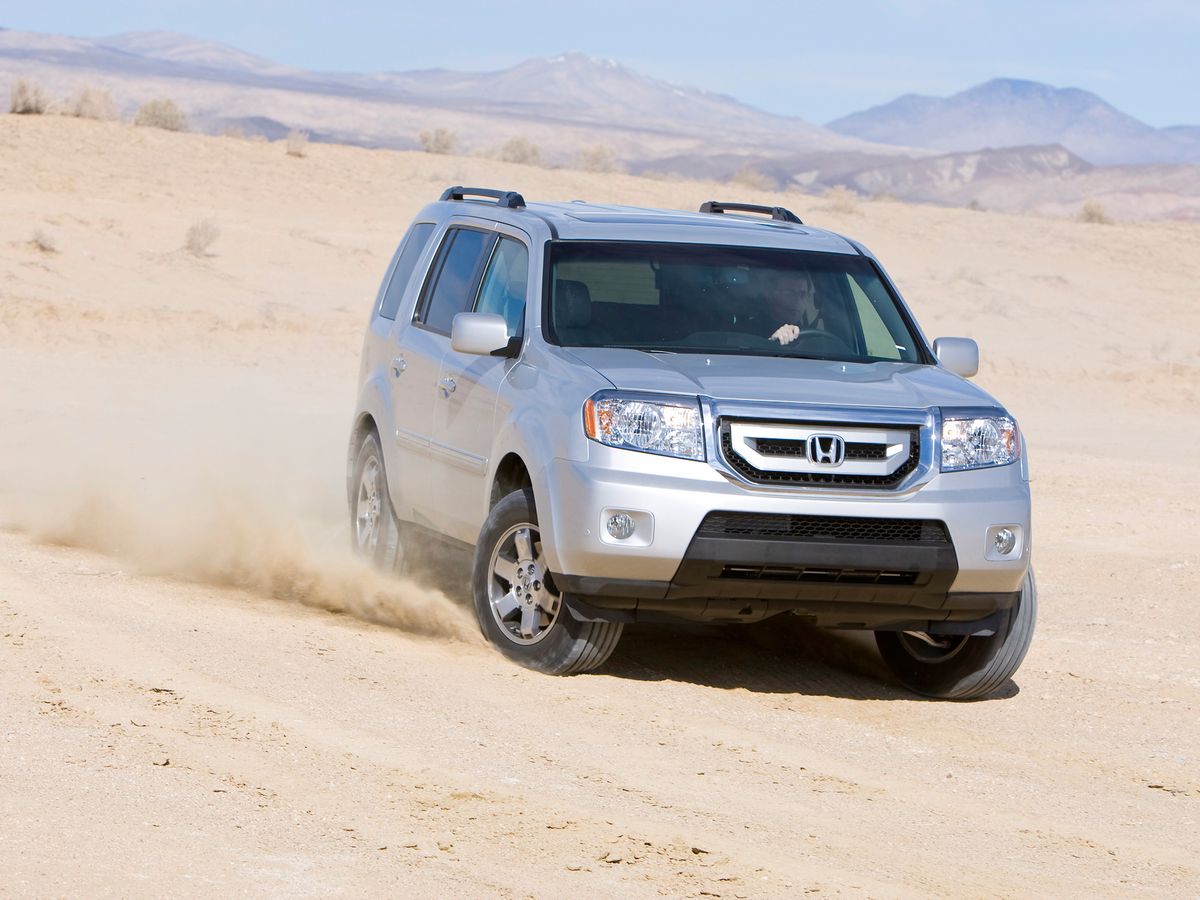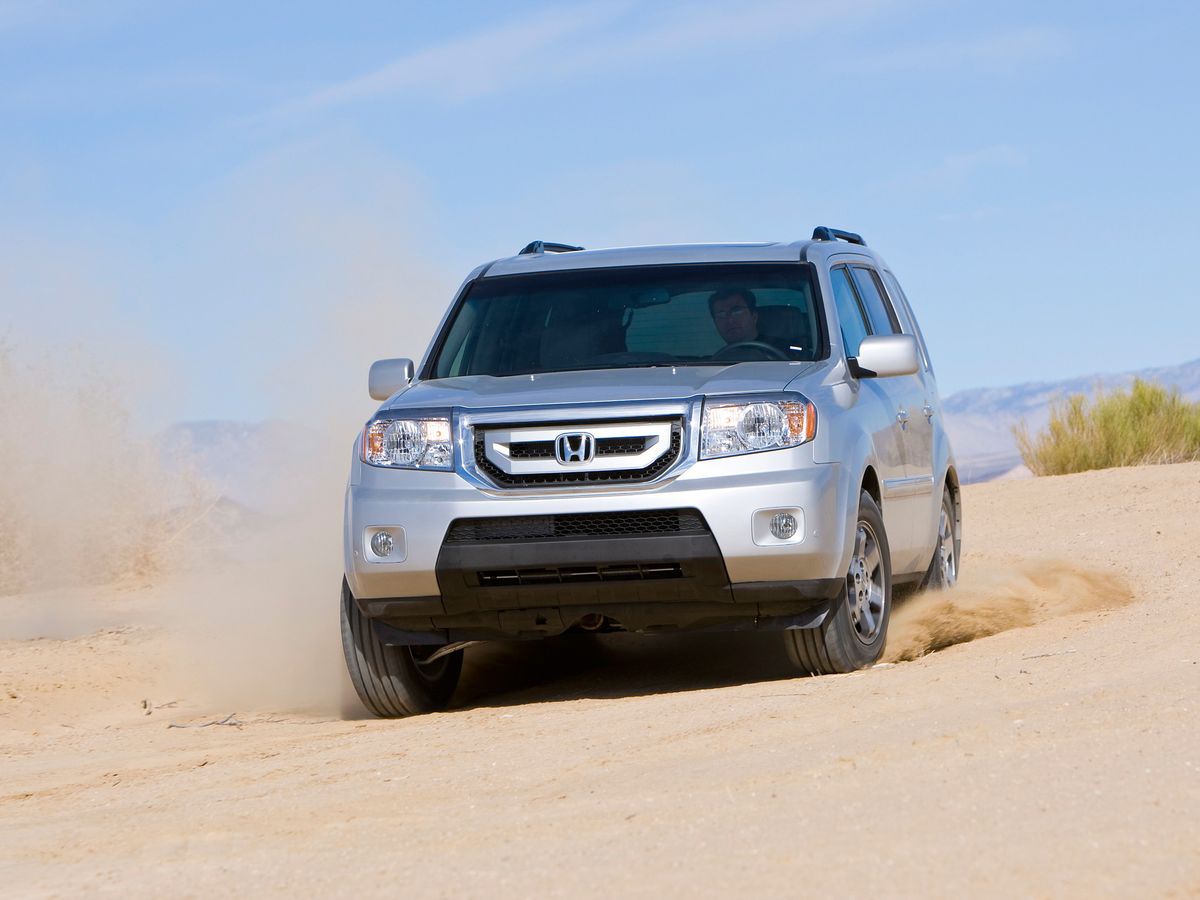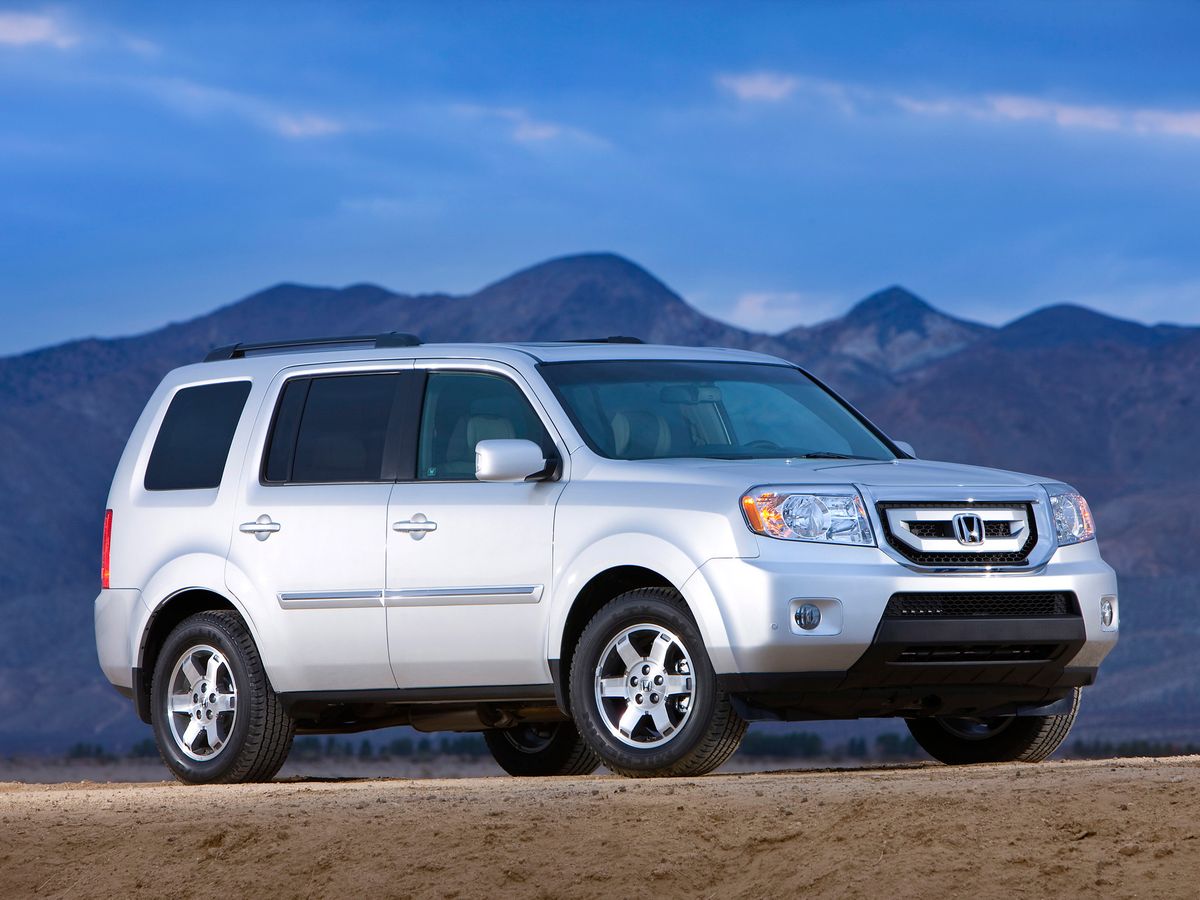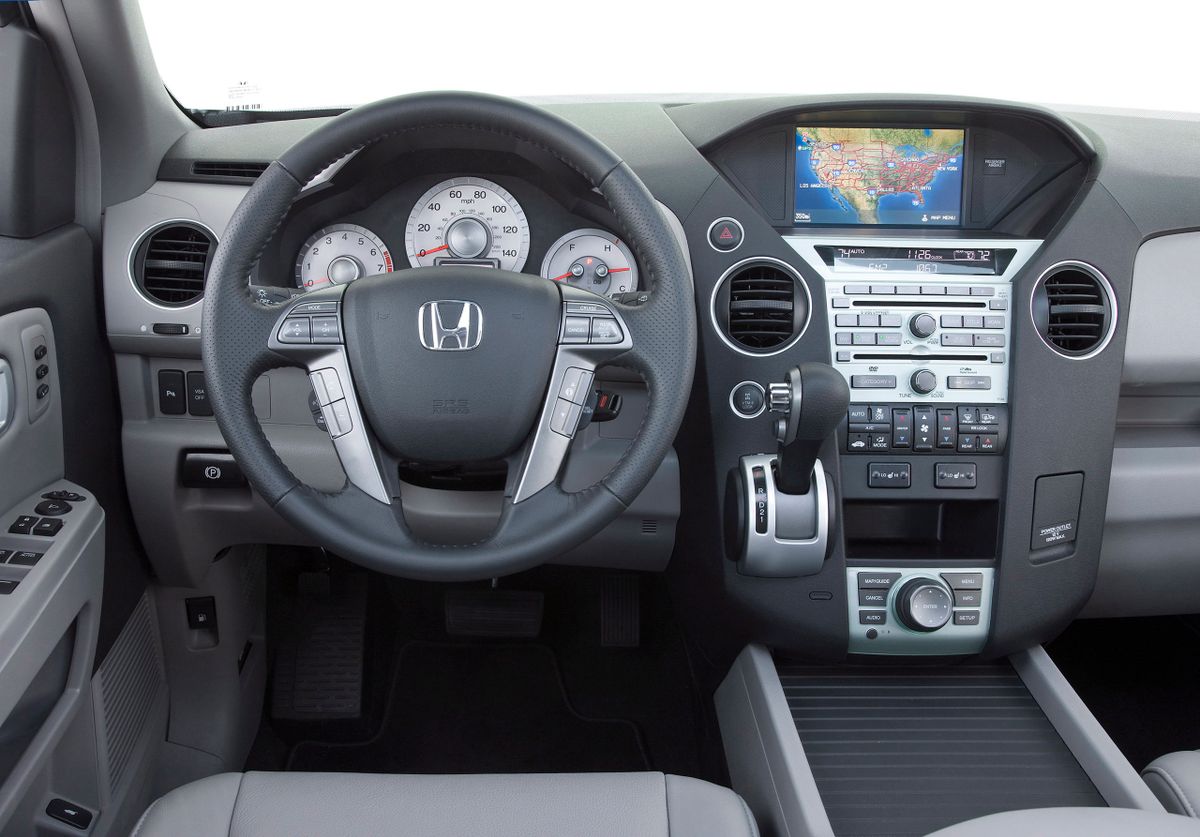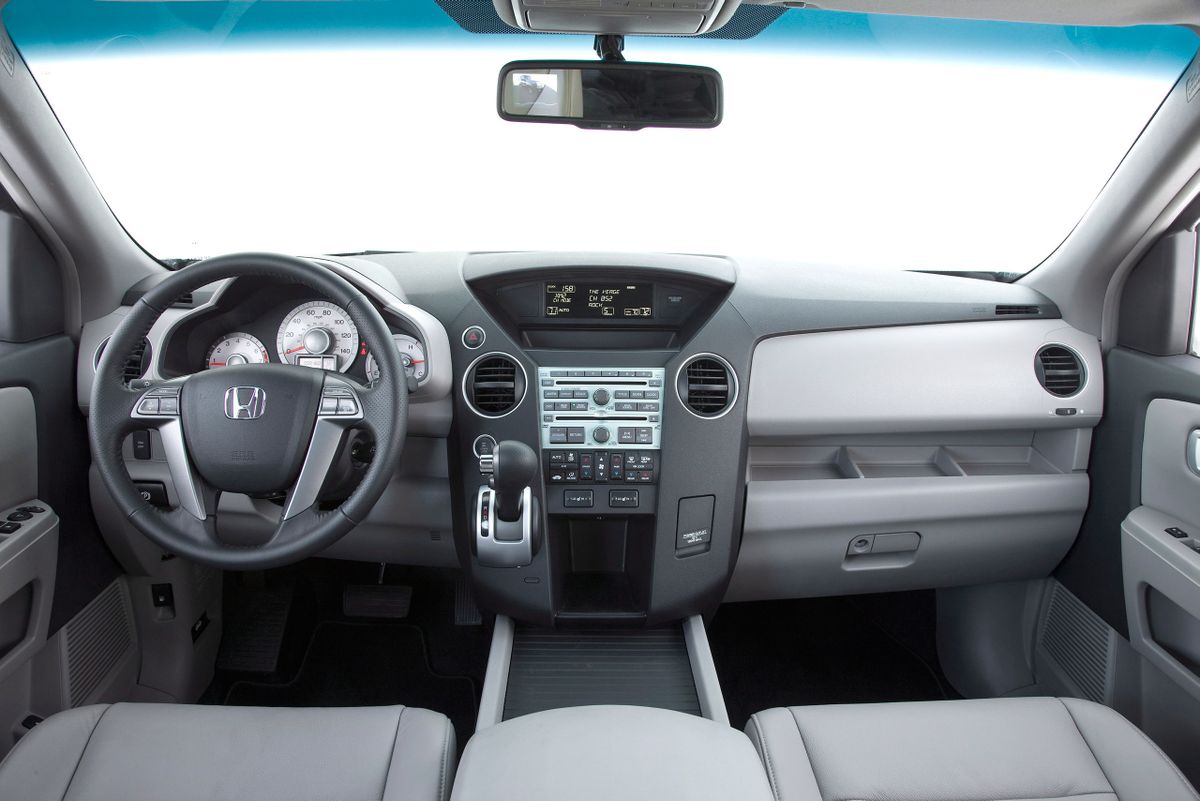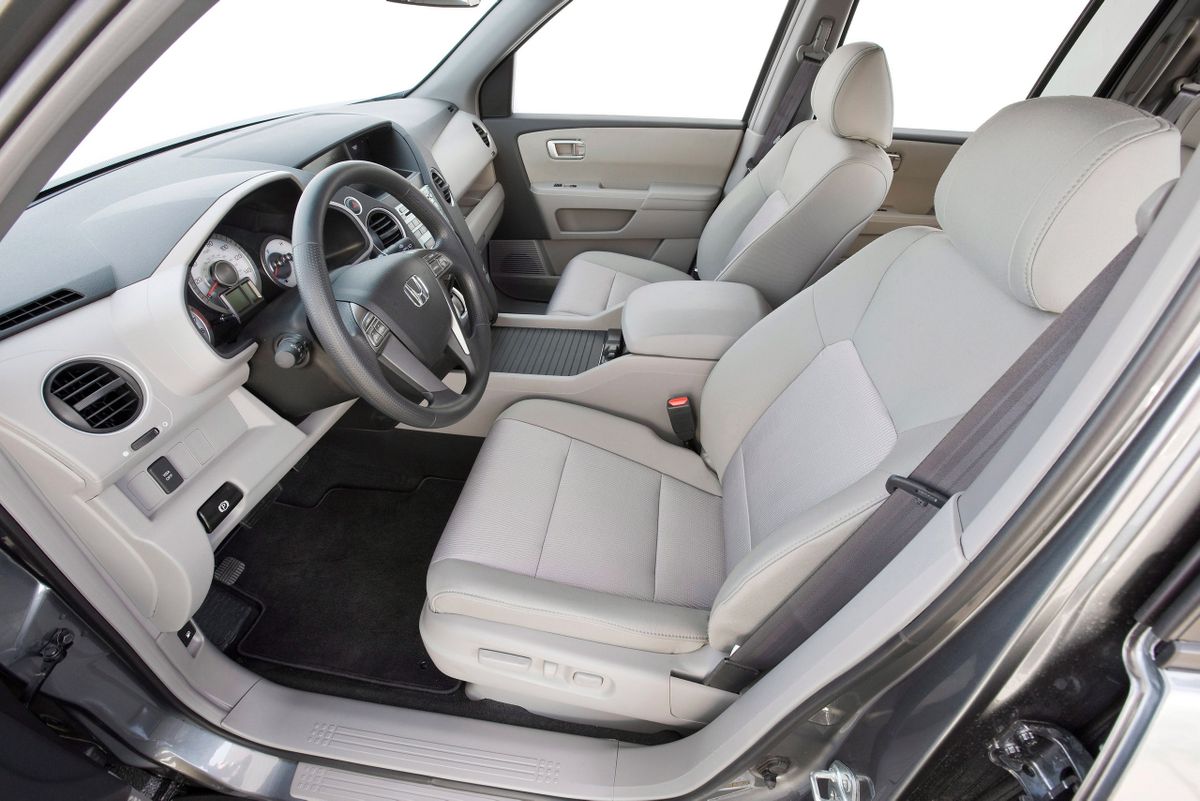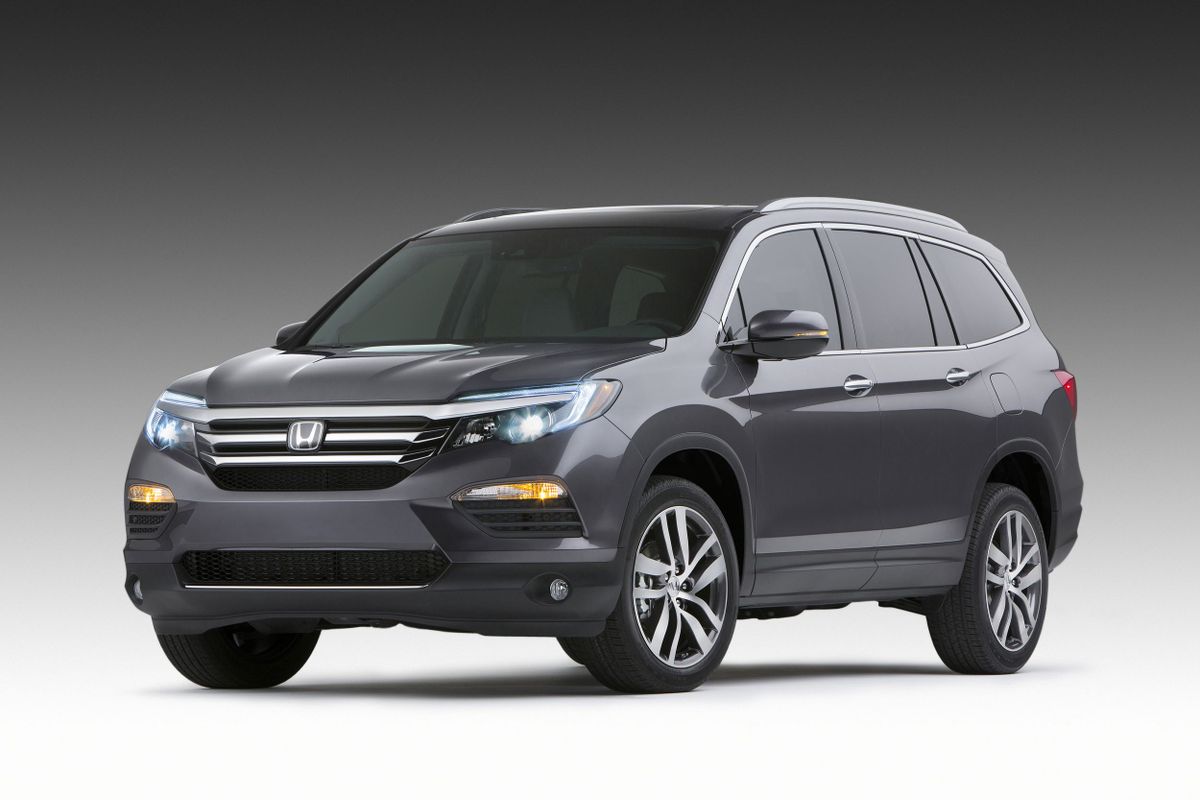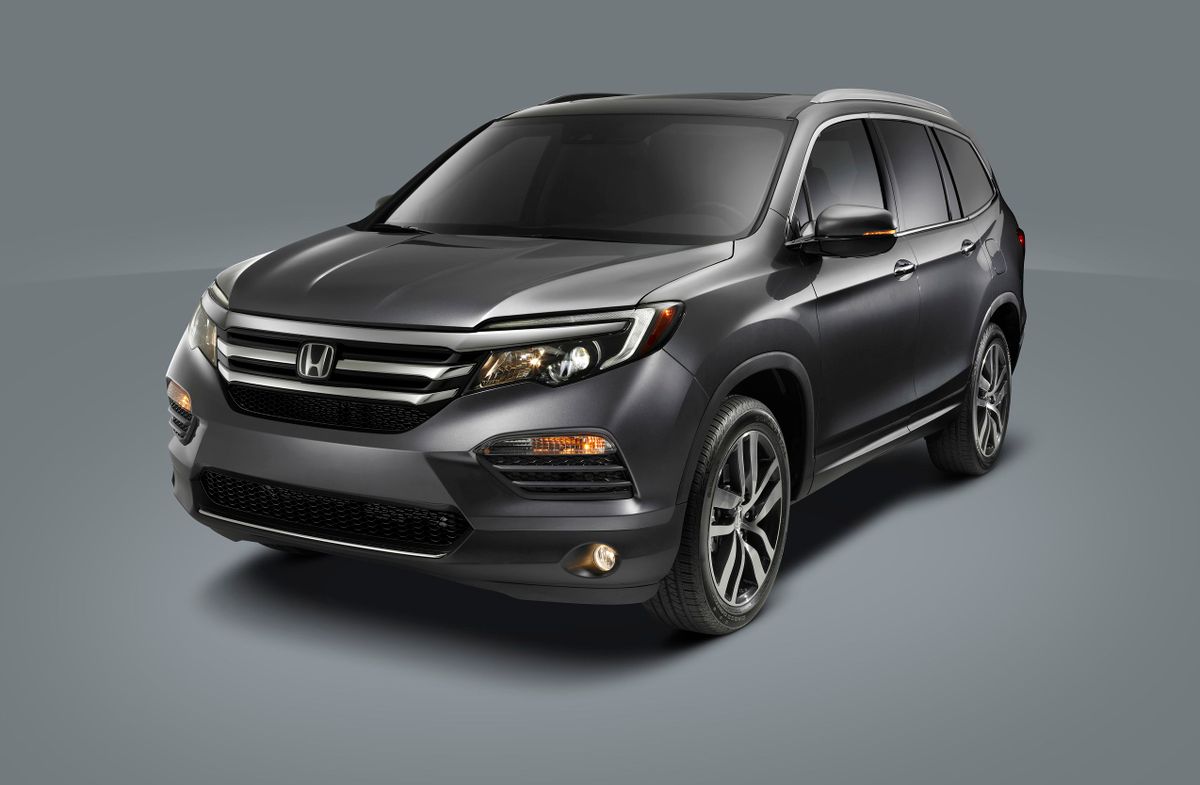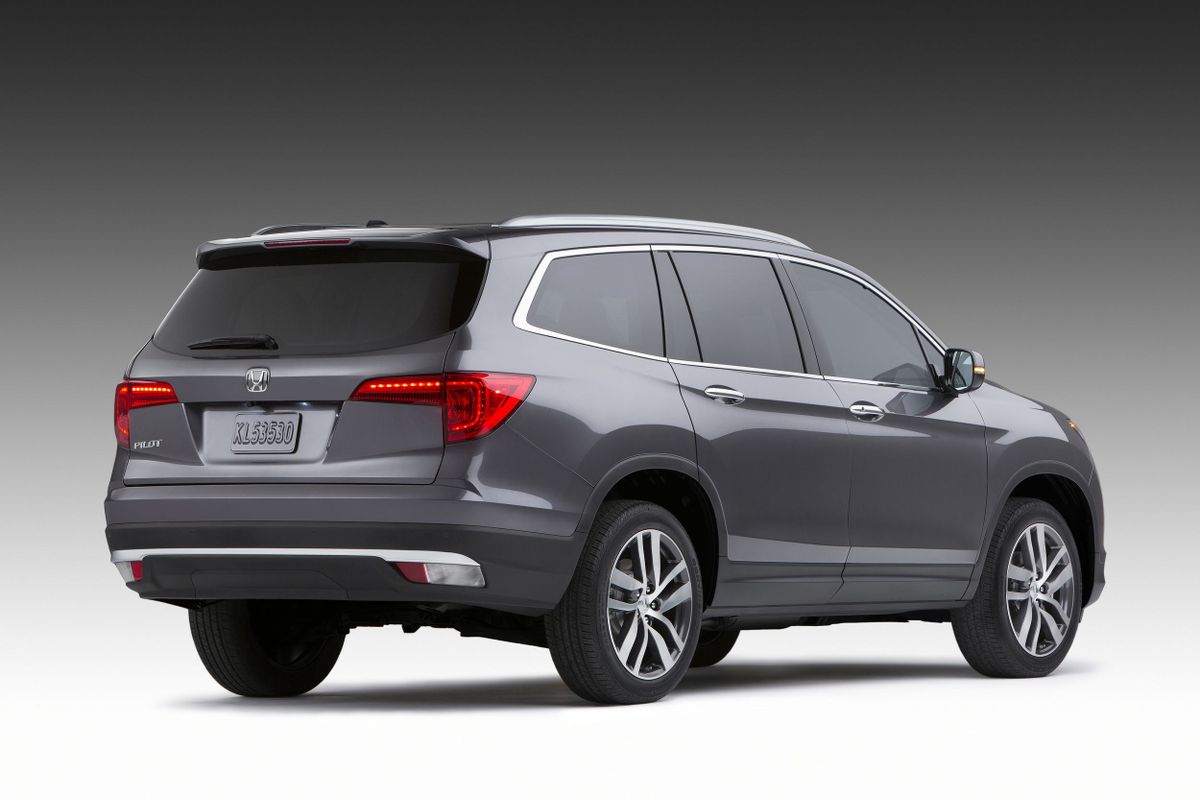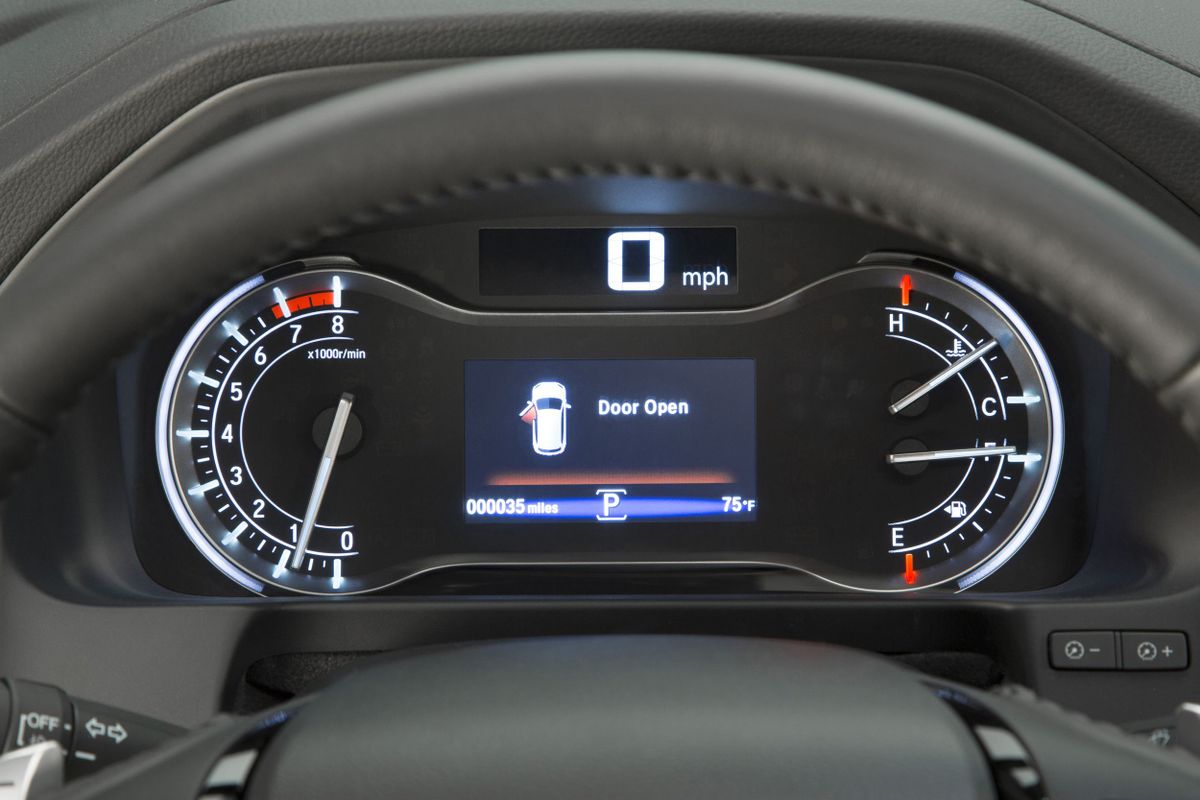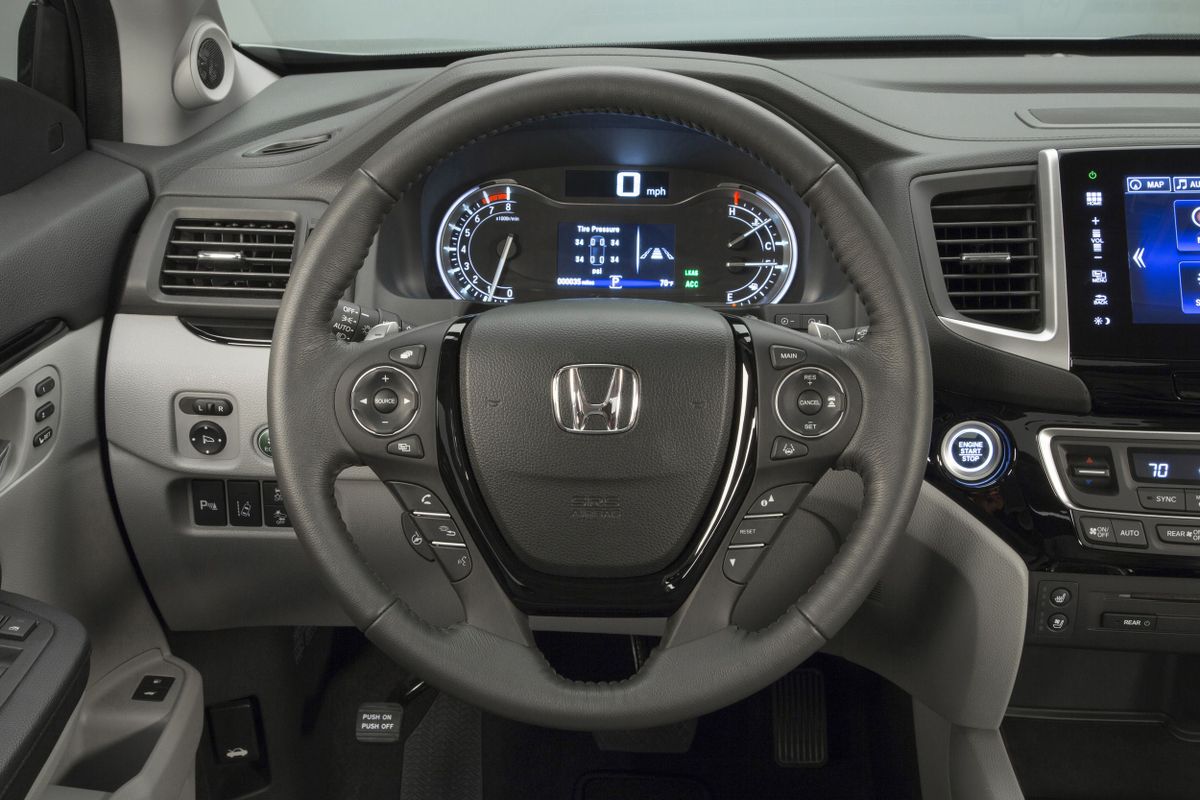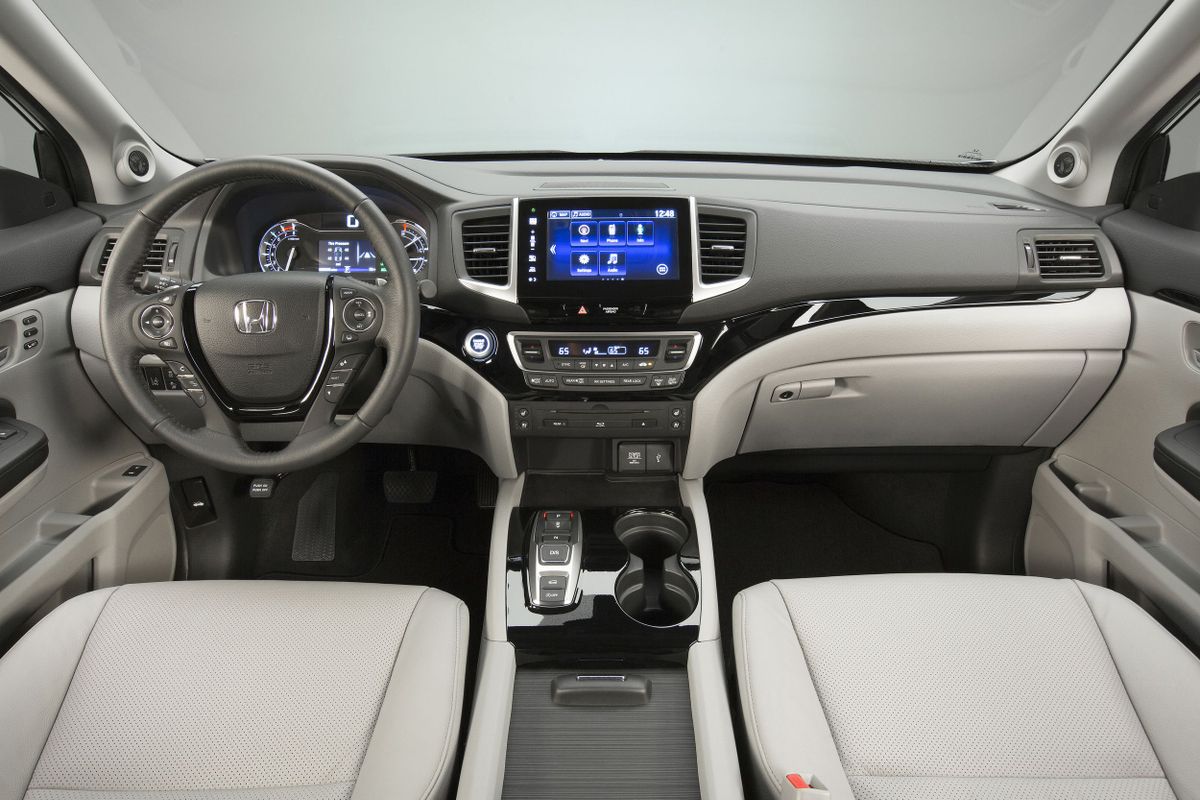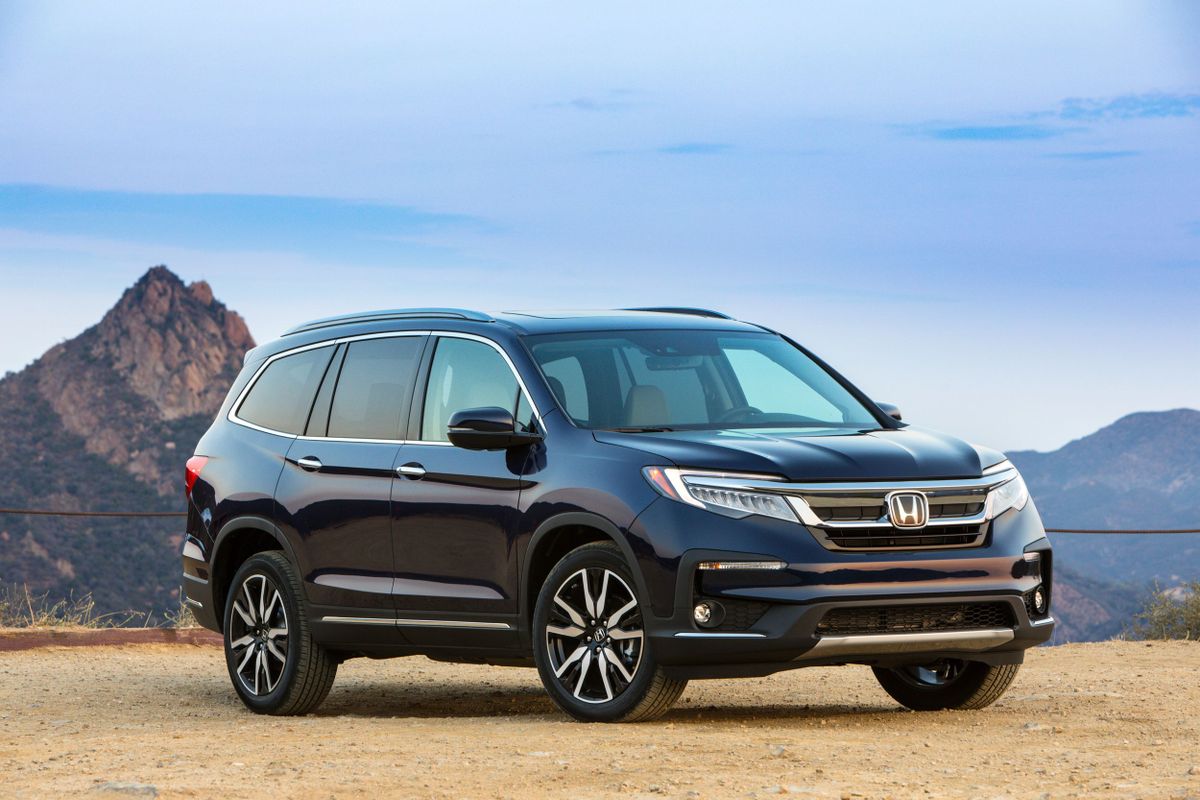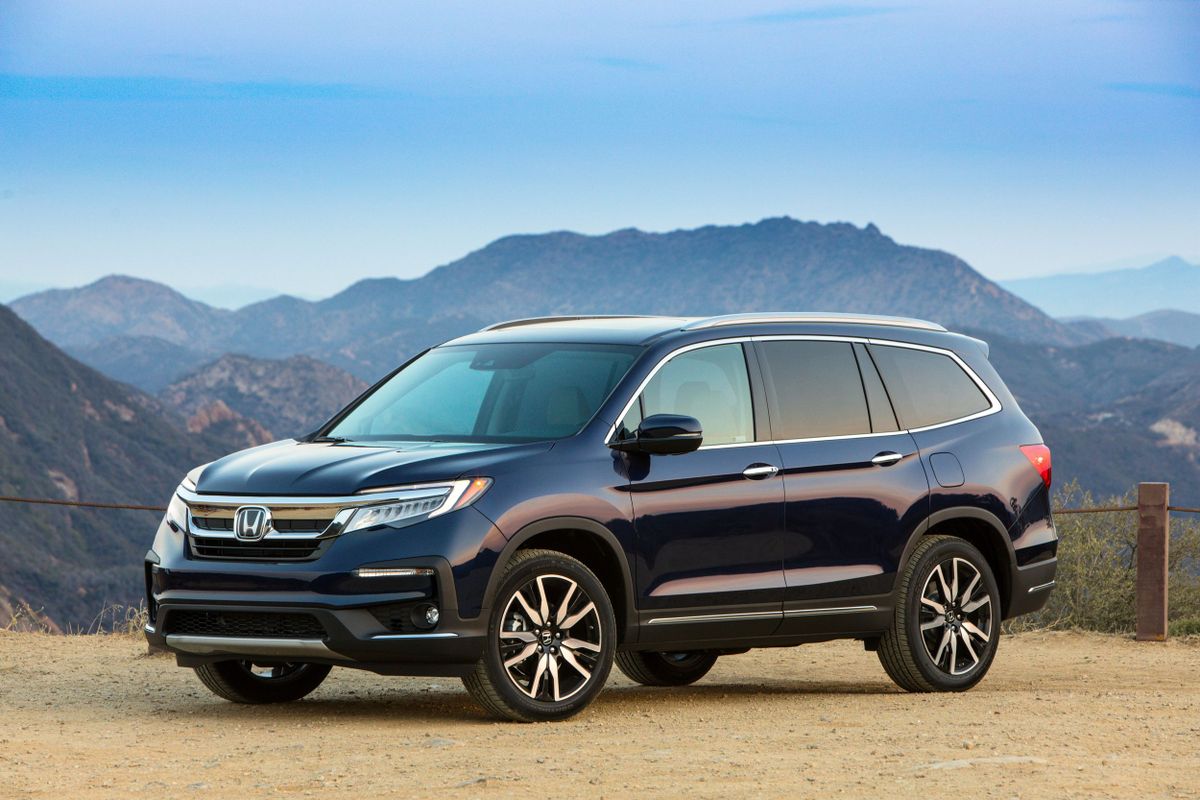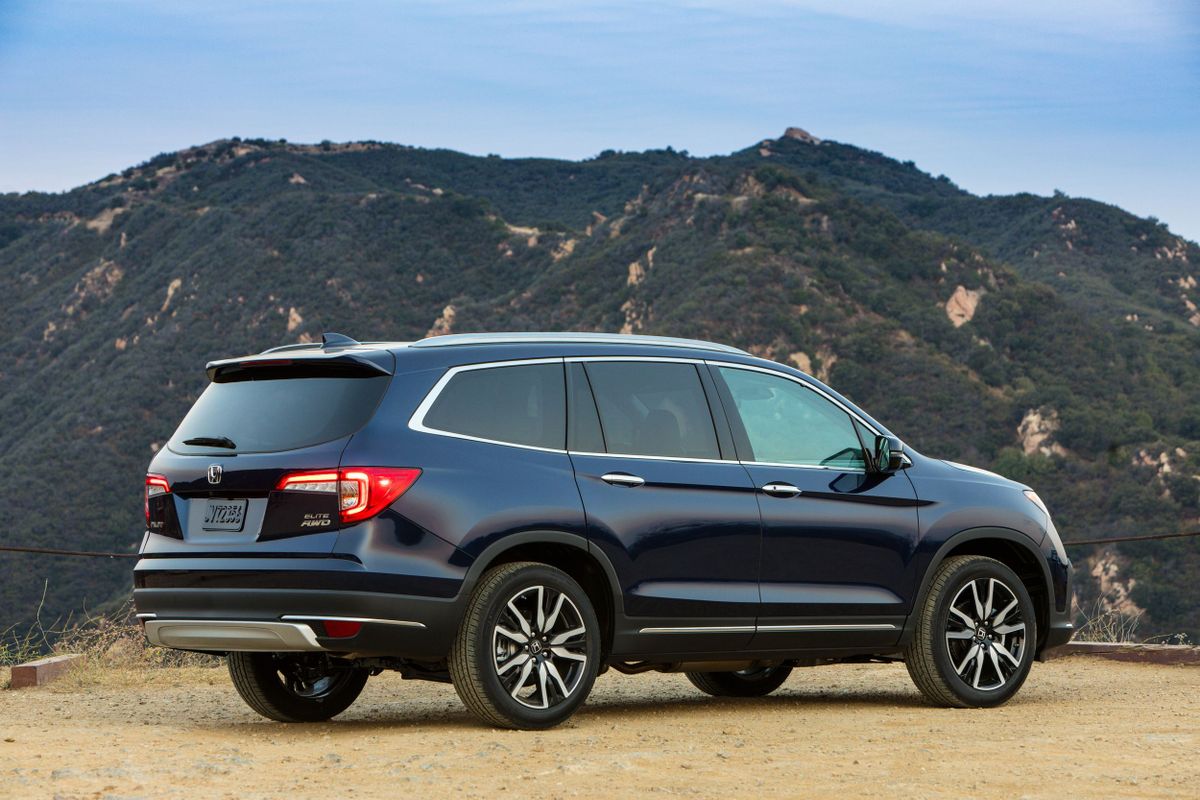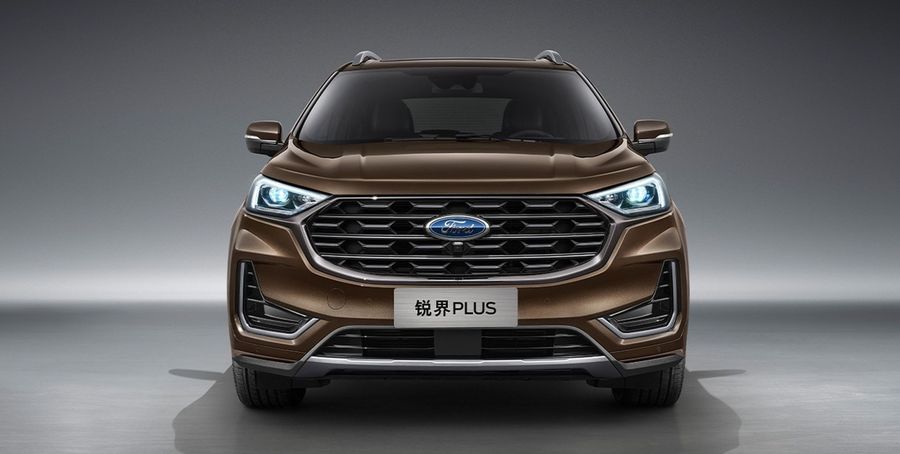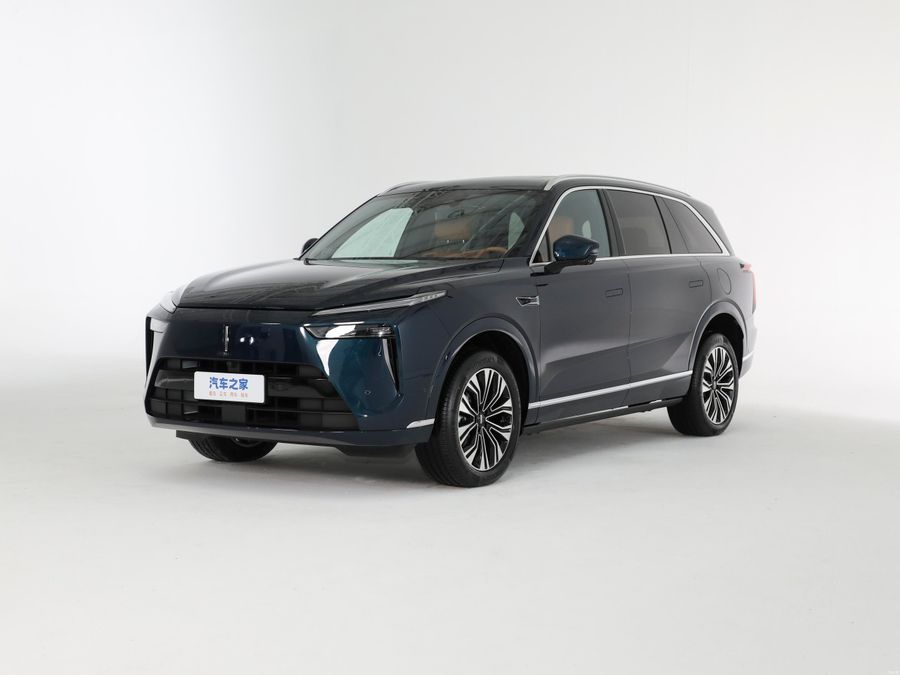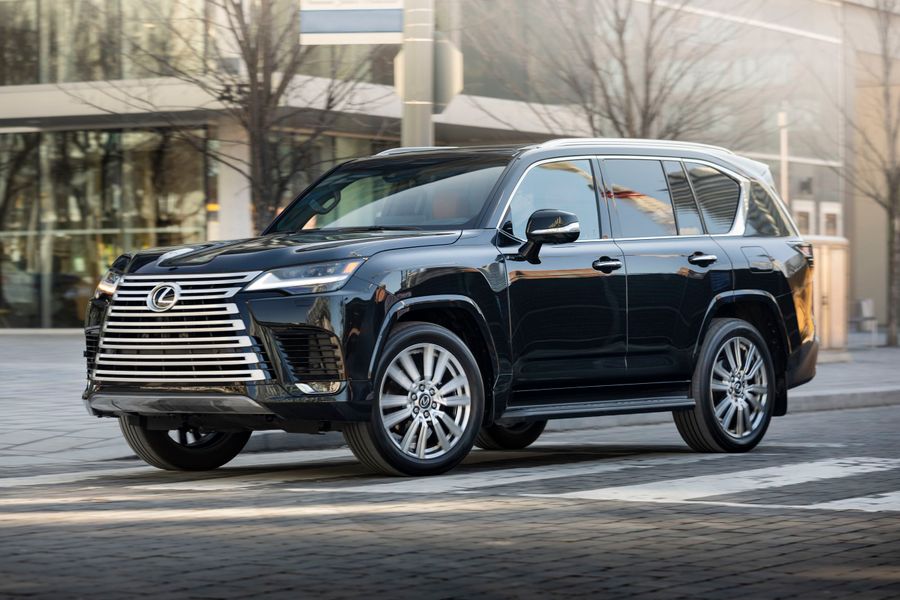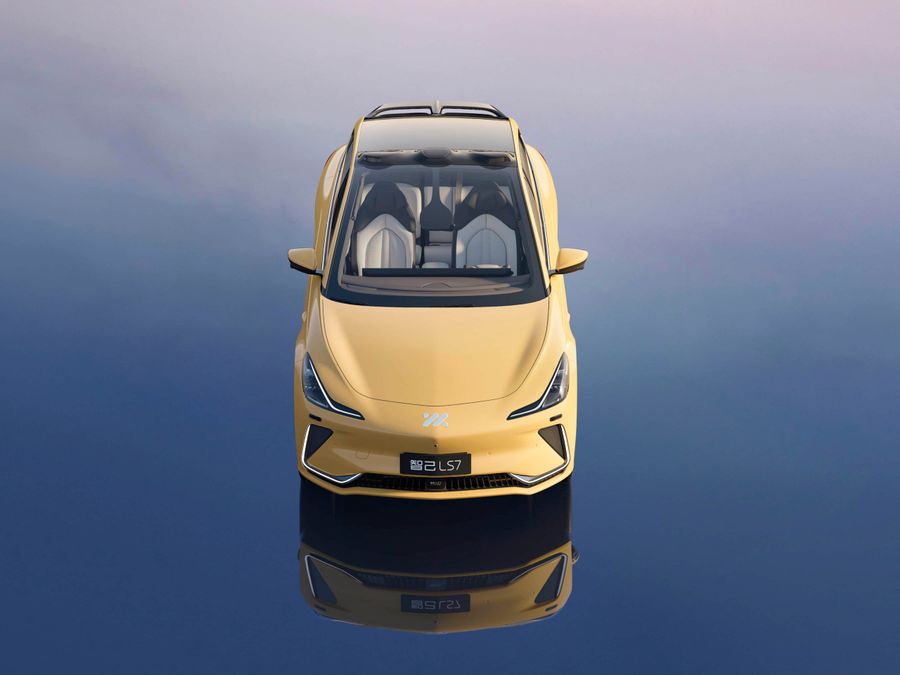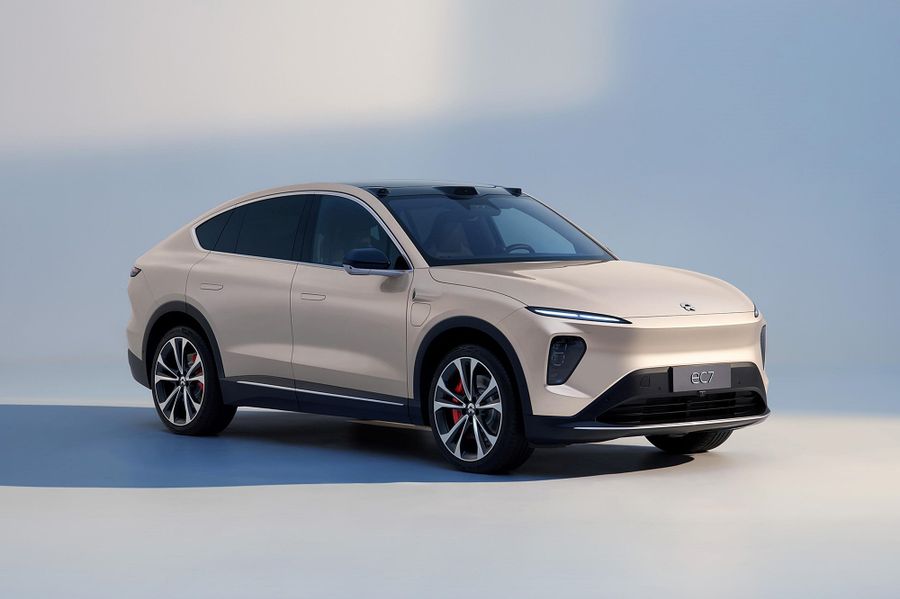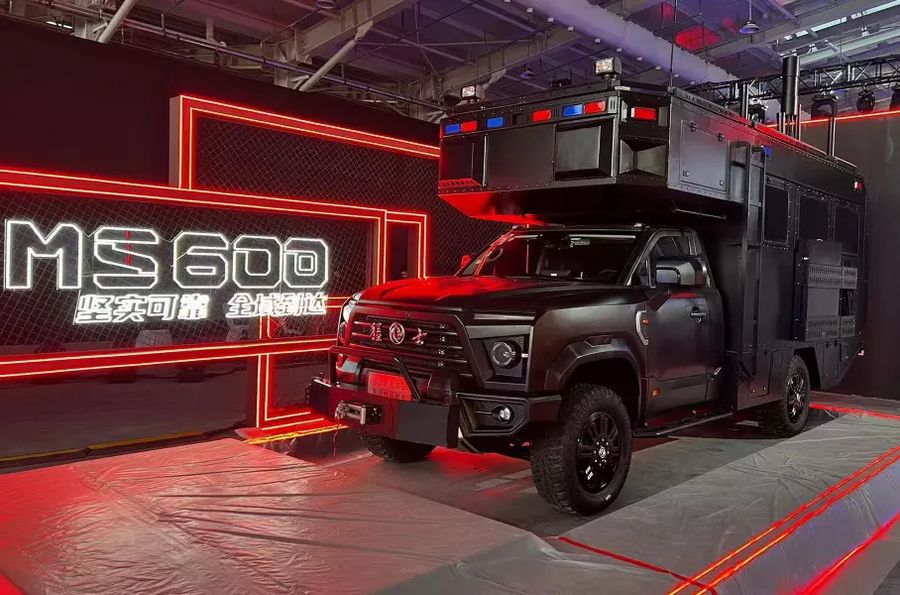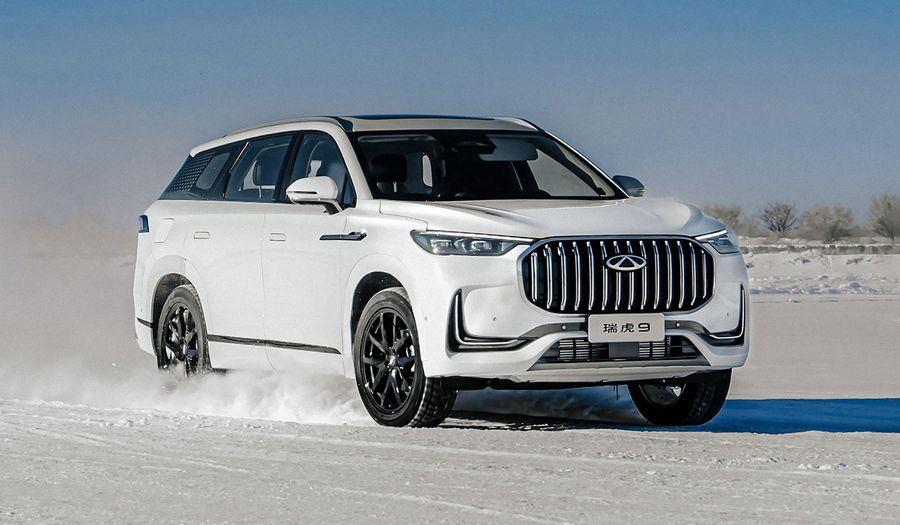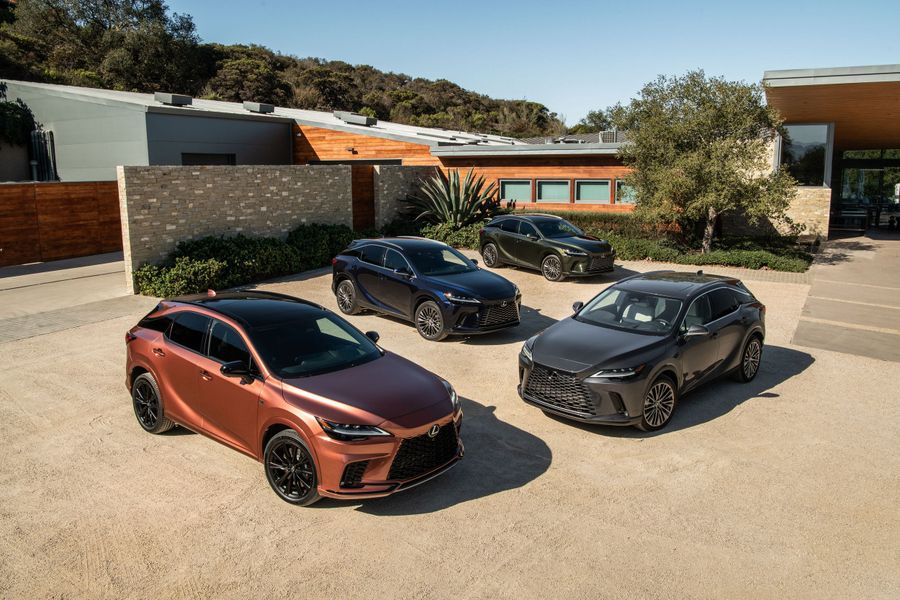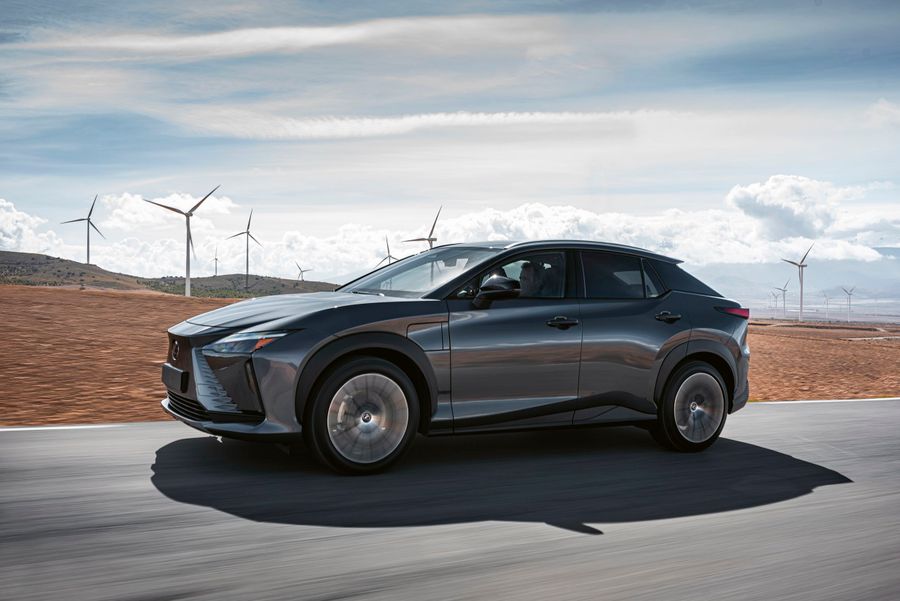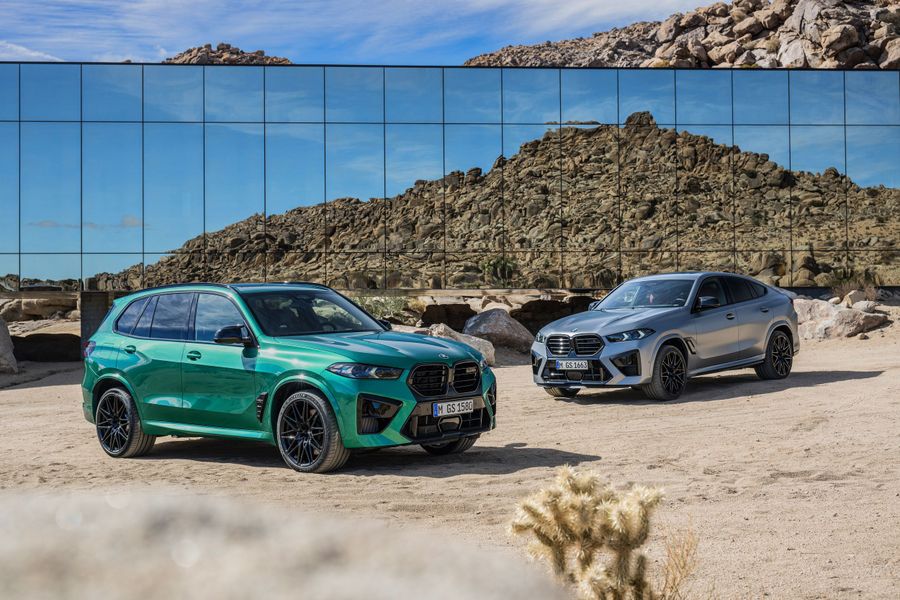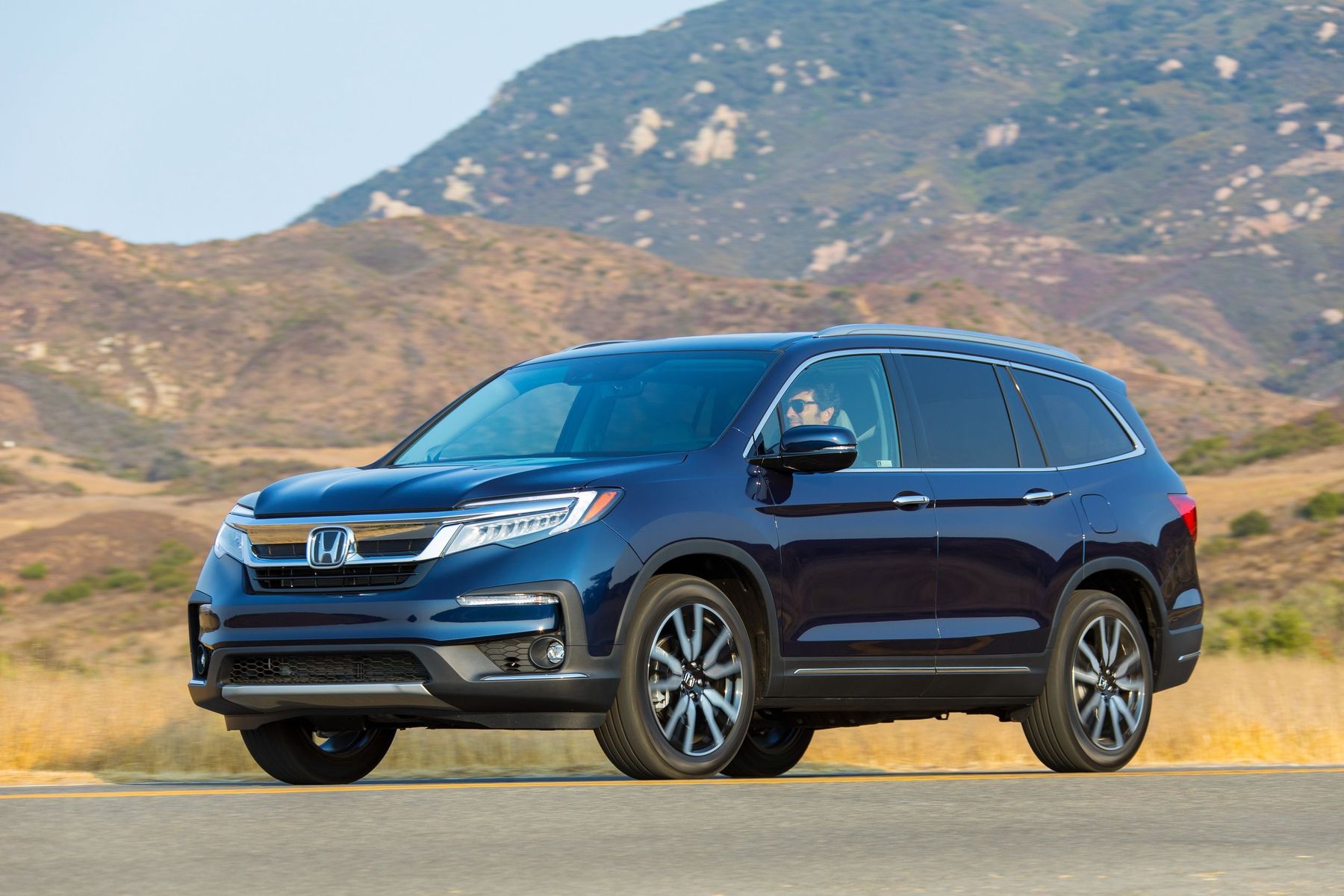
Honda Pilot. Benchmark SUV
The Honda Pilot is a large SUV made by Honda specifically for the American market. The model debuted in 2002. Initially medium-sized, it has grown to full-size starting from the third generation. The Pilot shares the platform with the Odyssey minivan, Legend sedan and Acura MDX. It is the company’s largest SUV to date. The three-row vehicle can be 7-seater or 8-seater. It has a monocoque body with a McPherson strut independent suspension at the front and a multi-link independent suspension at the rear, which makes handling of the SUV almost as easy as that of a passenger car. The first generation SUV was so successful that it started being supplied to Europe. The model is currently produced in the third generation and is sold in the markets of North and Latin America, Russia, Ukraine and the Middle East. However, it is not supplied to Israel, which is a pity.
The Honda Pilot is perfect for family travel, daily travel on city highways and off-road, transportation of passengers and belongings. In short, for any event where power, comfort, reliability and safety are important. It differs from other representatives of its class by its solid size and spectacular brutality. This is a real road ship with a masculine character, capable of handling ideal tracks and off-road. This SUV is almost perfect.
The first generation
It was produced from 2002 to 2008. The first Honda Pilot had a solid design and comfortable interior where the third row of seats could be folded into a flat floor to increase the trunk volume. It was equipped with a 3.5-liter V6 engine with 243 hp and 328 Nm of torque. In 2005, the engine was replaced by a more modern unit with 259 hp and 339 Nm. There was another version of the same engine with an output of 247 hp and 325 Nm of torque. Front-wheel drive versions had a three-cylinder shutdown system to save fuel at low loads. All vehicles were equipped with a 5-speed automatic transmission.
It should be noted that the big engine made such a large SUV quite dynamic: acceleration from 0 to 100 km/h occurred in 10.5 seconds, and the maximum speed reached 190 km/h. In the urban cycle, the Pilot needed 13.8 liters of petrol per 100 km, whereas in the suburban cycle, it needed 10.7 liters. The first generation SUVs were equipped with a VTM-4 all-wheel drive system with an electromagnetic clutch. Under normal conditions, most of the torque went to the front axle, and when slipping, up to 50% was transferred to the rear axle. There was also a rear differential lock, which worked at speeds up to 30 km/h, which distributed the torque evenly between the rear wheels, improving cross-country ability.
In 2005, Honda restyled the model. The upgraded Pilot had a new radiator grille, different front and rear optics. The vehicle acquired side airbags, as well as a redesigned dashboard and new decor details. In this form, the SUV was produced until December 2007.
The second generation
It was unveiled in 2008, and in the summer, the newcomer reached the dealerships. In 2011, the vehicle underwent a scheduled restyling, which brought it some minor changes. The exterior of the second Pilot was not changed, but rather upgraded. The formidable appearance was emphasized by the impressive dimensions of the body. The vehicle was 4,875 mm long, 1,995 mm wide and 1,845 mm high. The wheelbase of the big Japanese reached 2,775 mm, and the ground clearance was 200 mm. The interior was incredibly roomy, but the rear row seats were not very comfortable. With them, the trunk offered a volume of only 510 liters, but by folding the third row, you could get a huge compartment of 1,680 liters.
The SUV was equipped with is a 3.5-liter V-shaped 6-cylinder engine (249 hp, 347 Nm), coupled with a 5-speed automatic transmission with a new generation VTM-4 all-wheel drive system. Under normal conditions, up to 90% of the torque was transferred to the front wheels, but in case of slipping, the torque was partially transferred to the rear axle. At speeds up to 30 km/h, the center coupling could be locked. The structure of the suspension was similar to that of the predecessor (MacPherson strut and multi-link suspensions).
The third generation
It has been produced from February 2015 to the present (2021), which makes it the latest generation Honda Pilot. The vehicle has completely transformed inside and outside. It looks prettier and has become more sophisticated. The exterior of the new Pilot resembles the Honda CR-V, but it is larger, since it is the flagship of Honda’s off-road range. The SUV is 4,940 mm long, 1,996 mm wide and 1,773 mm high. The wheelbase is 2,819 mm, only the ground clearance has decreased to 185 mm.
The 2015/2016 Honda Pilot comes with a combined dashboard featuring analog gauges that indicate the engine temperature and the amount of fuel in the tank, as well as a 7-inch screen in the center displaying all other data. The multimedia package has an 8 mm screen, and there are the dual-zone climate control unit and a sound system. The interior is finished with soft quality materials. The new Pilot is 8-seater as standard, but for a surcharge, you can replace the middle bench seat by two separate luxurious seats. The seats of the two rows are heated, and the front ones are also ventilated. The trunk has a volume of 524 liters, and if the backs of the third and second row seats are folded down, the useful volume increases to 1,583 or 3,087 liters.
The Honda Pilot is delivered to the USA with a 3.0-liter 6-cylinder V-shaped engine, which produces 249 hp at 6,000 rpm and 294 Nm of torque at 5,000 rpm. The SUV accelerates to 100 km/h in 9.1 seconds. The vehicle comes with a good old 6-speed hydromechanical automatic transmission and the iVTM-4 intelligent all-wheel drive system, which distributes the torque not only along the axles, but also individually between the rear wheels. The options include an intelligent traction control system with four operating modes: Normal, Snow, Mud and Sand. In other markets, the new Honda Pilot has a 3.5-liter V6 (280 hp and 356 Nm) engine, coupled with a 9-speed automatic transmission.
The Pilot’s safety is ensured by LaneWatch side cameras, blind spot indicators, lane departure warning system and lane keeping assist, active cruise control and forward collision avoidance.
2018 restyling
In June 2018, the SUV underwent a minor restyling. The exterior and interior were slightly upgraded, and the list of equipment was expanded. The 9-speed automatic transmission now offers smoother and faster gearshifts. The restyled 2018/2019 Honda Pilot is still a benchmark SUV, the largest SUV of the Japanese company, a real cruise liner for surface travel on roads of any quality.


